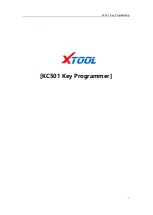
DAC-515E Rev. C
3 Training Scenarios
3.1 Available Scenarios
Six training scenarios (described below) are available for training exercises, and
can be changed during training as desired.
The following scenarios are available:
VF (Ventricular Fibrillation) that converts to a non-shockable rhythm
(normal sinus rhythm) after the 1st shock. This scenario is based on
the American Heart Association AED training scenario and allows for a
quick overview and demonstration of AED operation.
Non-shockable rhythm throughout.
Bad pads indication until the pads are disconnected and then re-
connected (simulating replacement of the pads), followed by VF that
converts after the 1st shock to a non-shockable rhythm (normal sinus
rhythm).
VF that converts on the 2nd shock to a non-shockable rhythm (normal
sinus rhythm).
Non-converting persistent VF.
Pads not applied to the patient. This scenario is recommended as the
Default Scenario when using the Remote Control. The AED will prompt
the student to apply pads to the patient dummy, and the instructor can
then manually select rhythm simulations (such as NSR and VF) or any
one of the above training scenarios using the Remote Control.
1.
2.
3.
4.
5.
6.
Note:
When the AED Trainer is turned on, it will power up in the Default
Scenario, not in the last-used scenario (see section 3.3 for instructions on setting
the Default Scenario).
Note:
Training scenarios 1-5 assume that pads have already been applied to
the patient if pads are connected to the AED when the AED is turned on. For
properly sequenced exercises using these training scenarios, the student should
either apply the pads to the patient before turning the unit on, or turn the unit
on with pads disconnected, apply the pads to the patient, and then connect the
pads to the AED.
3.2 The Default Training Scenario
When a AED Trainer is first turned on, it operates in the “Default Training
Scenario”. The Default Training Scenario can be changed to any of the six available
training scenarios.
Note:
New Standalone AED Trainers and newly-configured DDU-100 AEDs are
factory programmed to initially start with the Default Training Scenario set to
scenario #1.






























